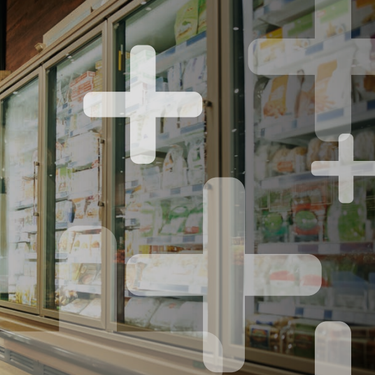State and International Regulations Continue to Drive
HFC Refrigerant Phase-Down
Commercial refrigeration stakeholders have been closely monitoring regulatory efforts to phase down the use of high-global warming potential (GWP) hydrofluorocarbon (HFC) refrigerants. The unsettled regulatory climate has made it difficult for food retail companies to plan for compliance and select next-generation refrigeration strategies. But now it appears that the regulatory picture is coming into clearer focus. Many companies have already begun their lower-GWP refrigerant transition and seek regulatory guidance to help inform their long-term refrigerant choices and implement their sustainability goals.
Refrigerant Safety Standards & Codes
For several years, the governing bodies that regulate the safe use of refrigerants in the U.S. have been evaluating the prospect of increasing charge limits in the flammable A3 refrigerant propane (R-290) and an emerging class of mildly flammable A2L refrigerants. In 2021, the Underwriters Laboratories (UL) approved the second edition of its UL 60335-2-89 standard, which included higher charge limits that would expand the potential uses of R-290 and A2Ls in commercial refrigeration.
R-290 charge limit increases
With a long-held maximum charge limit of 150g, R-290 has primarily been used in smaller, self-contained units that don’t need large refrigeration loads. Designing larger-capacity, R-290 based refrigeration equipment has required the use of multiple R-290 based compressors or condensing units.
The updated UL standard raises the charge limits on these commercial stand-alone displays based on whether they have an open or closed design:
• 500g maximum charge limit in open appliances (without doors)
• 300g maximum charge limit in closed appliances (with doors or drawers)
From an application design perspective, these higher charge limits will help to increase system capacities while capitalizing on R-290’s high efficiency and low-GWP rating (GWP = 3).
Ensuring the safe use of A2L refrigerants
Mildly flammable A2L refrigerants have also been identified as low-GWP alternatives for complying with emerging refrigerant regulations. Because of their potential flammability, to date A2L refrigerants have been used globally in relatively small refrigeration architectures, such as: self-contained systems, indoor/outdoor condensing units (OCUs) and distributed systems.
Per the recently updated UL 60335-2-89 safety standard, new A2L charge limit guidelines have been established for self-contained and remote refrigeration systems. For self-contained equipment, charge limits are determined on whether equipment is open or has doors or drawers. Degrees of flammability will vary among different A2L refrigerants, so it’s important to calculate charge limits based on the specific A2L characteristics.
For example, since R-454C has a lower flammability limit (LFL) of 0.291 kg/m3:
• A closed-door case can be charged with up to 2.33 kg (5.1 lbs.) of R-454C.
• An open case with R-454C can be charged with up to 3.78 kg (8.3 lbs.) of R-454C.
In remote or field-erected systems, UL 60335-2-89 supports R-454C charge sizes up to 75.7 kg (166 lbs.) per circuit.
Per the UL 60335-2-89 standard, remote A2L systems must be designed with requisite safety strategies and mitigation measures to keep gas concentrations below flammable thresholds. This includes the ability to detect refrigerant leaks at various points of the refrigeration circuit — from the compressor to the condensing unit to the case — and then take immediate action to mitigate flammability risks. In human comfort applications, similar UL standards are also in place.
Safety standard updates set the stage for wider approvals
The UL 60335-2-89 second edition update was only the first step in a larger series of regulatory approvals needed to enable higher charges of R-290 and the use of A2Ls in U.S. commercial refrigeration. The following supporting regulatory and policy changes were also approved:
- EPA Significant New Alternatives Policy (SNAP) approval of specific A2L refrigerants and increased R-290 charge limits
- ASHRAE 15 safety standard update for refrigeration systems
- Model code updates, such as: Uniform Mechanical Code (UMC), International Mechanical Code (IMC) and International Fire Code (IFC)
- State and local building code updates
The Kigali Amendment to the Montreal Protocol
When considering the regulatory uncertainty in the U.S., it is easy to forget that the Montreal Protocol has been evaluating the global warming potential of HFCs for over a decade. In 2016, 197 countries met in Kigali, Rwanda, and agreed on a global proposal to phase down HFCs. The Kigali Amendment required ratification from at least 20 countries to take effect. To date, 163 countries have ratified it. As such, it took effect for participating countries on January 1, 2019.
Federal HFC Legislation
The American Innovation & Manufacturing Act (AIM Act) was signed into law in 2020, granting the federal government the authority to regulate HFC refrigerants in three primary ways via the Environmental Protection Agency (EPA).
- Phasing down HFC supplies by reducing their production and consumption over a 15-year period. These supply-side restrictions began on Jan. 1, 2022, requiring a 10% reduction in HFC production and consumption through 2023. Per this HFC phasedown schedule, an additional 30% reduction will take effect between 2024 and 2028 — with 70% and 80% reductions needed by 2029 and 2034, respectively. Not only are these phasedowns expected to drive up the price of HFC refrigerants as supplies decrease, but they also signal the end of a high-GWP HFC era in commercial refrigeration.
- Establishing sector-based approvals and HFC restrictions that facilitate transitions to next-generation refrigerant technologies. HFC use restrictions would help specific sectors to transition more quickly away from higher-GWP HFCs while providing additional flexibility for those who may need more time. A key aspect of this effort includes the EPA’s authority to support the demand for lower-GWP refrigerants by approving new alternatives per sector-based application guidelines.
-
Regulating HFC management by establishing standards for the management of HFCs in servicing and repair processes, such as: lowering leak rate thresholds and requiring proper recovery of “used” HFCs for purification and resale (aka reclaim). This would allow for an efficient transition from HFCs in accordance with reductions in production and consumption schedules.
Environmental Protection Agency (EPA)
The EPA's Technology Transition Rule restricts the use of high-Global Warming Potential (GWP) HFCs in various sectors, including refrigeration, air conditioning, and heat pumps, to facilitate a transition to lower-GWP alternatives. This rule aims to reduce greenhouse gas emissions and address the environmental impact of these refrigerants. The EPA's authority for this rule comes from the American Innovation and Manufacturing (AIM) Act.
The rule restricts the production, import, and sale of products and systems containing high-GWP HFCs in various sectors. There are phased compliance dates for different sectors, with some restrictions having gone into effect on January 1, 2025, for residential and light commercial air conditioning and heat pumps. More restrictions will go into effect in 2026 and 2027.
The rule encourages the adoption of new technologies with lower GWP refrigerants, such as A2L refrigerants. The rule applies to specific sectors and subsectors, like aerosols, foams, and various types of refrigeration and air conditioning equipment.
California Air Resources Board (CARB)
The California Air Resources Board (CARB) continues to lead the way on the HFC phasedown in the U.S. After several years of collaboration with state and HVACR industry stakeholders, CARB’s proposed rulemaking became final in late 2021 and went into effect on Jan. 1, 2022. This rule establishes HFC phasedown requirements for new facilities and includes a company-wide provision for food retailers operating with a fleet of existing stores within California.
New facilities — Installation of new refrigeration systems containing more than 50 pounds of refrigerant are required to use refrigerants with less than 150 GWP.
Existing facilities — Installation of new systems are subject to company-wide, fleet GWP reduction targets by 2030, as compared to their 2019 baselines. CARB offers two paths to compliance for new systems in existing facilities:
- Weighted-average GWP (WAGWP) reduction < 1,400 GWP by 2030, where WAGWP is the sum of the total refrigerant charge of every system greater than 50 pounds in every store in California.
- Greenhouse gas emissions potential (GHGp) reduction by 55%, where GHGp is the sum of the total refrigerant charge of every system greater than 50 pounds in every store in California multiplied by the GWP values of the refrigerant types in use.
Refrigeration equipment under 50 lbs of charge will still be required to follow SNAP 20/21 per state law.
Although the AIM Act permits individual states to create their own environmental regulations — such as those pursued by U.S. Climate Alliance states — many are awaiting federal guidance for the use of refrigerants in commercial refrigeration. Industry organizations — such as the Air-Conditioning, Heating, and Refrigeration Institute (AHRI) and the Natural Resources Defense Council (NRDC) — and stakeholders have asked for states to be consistent in their approaches. Most would prefer that our industry adopt a unified federal approach, rather than managing a patchwork of state-led initiatives.
With California taking a leadership role on environmental regulations, it’s very likely that other states will adopt a similar (if not identical) approach. In 2017, a coalition of 16 states and Puerto Rico emerged to form the U.S. Climate Alliance, with a shared commitment of reducing SLCPs and HFCs. Since then, the Alliance has grown to 25 members — comprising more than 55 percent of the U.S. population and an $11.7 trillion economy; several of its states have announced plans to follow California’s lead on HFC phase-downs.
Industry advocates, including the Air-conditioning Heating and Refrigeration Institute (AHRI) and the NRDC, have asked for states to be consistent in their approach to adopting CARB’s rules.
Department of Energy (DOE)
Refrigerants are only one factor in the regulatory equation affecting HVACR industry; it is also dealing with energy mandates by the DOE. Energy standards are in place for three classes of commercial refrigeration equipment:
Commercial Refrigeration Equipment (CRE). Compliance equations are factored according to the unit’s daily energy consumption (kWh/24-hour) and its total display area.
Automatic Commercial Ice Makers (ACIM). Again, each equipment class has a specific equation to measure compliance, so OEMs must be certain of their particular class requirements. Energy consumption is expressed in kWh per 100 pounds of ice produced.
Walk-in Coolers and Freezers (WICF). WICF manufacturers measure energy efficiency according to the AHRI-1250 annual walk-in efficiency factor (AWEF) standard.





